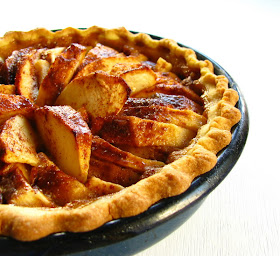Kiflice, although called differently in the different countries, are a very Balkan breakfast. They were chosen by Maja from Cooks and Bakes as this month's Fresh from the Oven challenge. Maja is a Serbian, i.e. she is a neighbour of ours.
After having Chelsea buns, which are a typical British breakfast, last month, it was interesting to see a typical Balkan one.
I always tend to overfill those rolls so there is always some leakage but I love them with extra cheese and can't restrain myself of overstuffing them. Here for the filling I used white brine cheese mixed with savory and a spoon of yoghurt as the cheese was a little bit hard.
I mixed the dough late in the evening and made the rolls the next morning for breakfast.
Overall, I found the dough recipe very very good and the baking with the additional butter makes the rolls crispy and crunchy.
Come and check out the Fresh from the Oven site to see how everybody did it.
Kiflice Recipe:
Makes 40 mini cheese rolls.
For the Dough:
- 500 g all purpose flour;
- 10 gr salt;
- 20 gr fresh yeast (2 tsp instant yeast or 2.5 tsp active dry yeast);
- 1 tsp sugar;
- 250 ml milk;
- 75 ml sunflower oil(or any other neutral vegetable oil);
- 1 egg;
- 200-250 g cottage cheese (you may use feta or other fresh cheese);
- 1 egg white (optional).
- 1 egg yolk;
- 1 Tbsp milk;
- 100 g butter.
Sift the flour, add salt. Add activated yeast, egg, oil and milk, then combine using a wooden spoon to get smooth dough. The dough seems like too soft and too sticky at the beginning, but don't worry, continue with kneading, and soon your dough should start to separate from the bowl, and thicken. It is not necessary to knead the dough by hands, the wooden spoon works just fine. Grease the cling film with oil, cover the bowl, and set aside for at least an hour, at lukewarm place, to let the dough doubles in size.
Crush the cheese using a fork. Add some salt if it tastes neutral. Stir the egg white in, if the cheese is too crumbly. Filling shouldn't be runny, but thick and compact, thicker than the cream cheese.
Re-knead the dough, divide into 5 equal parts, shape them into balls. Each part should make 8 rolls, so you'll end up with 40 rolls, which should perfectly fit the regular oven pan, if lined in 5x8 order. Flatten each ball by hands over the floury working surface, then use a rolling pin to roll the dough out in a circle, a few millimetres thick. Use a sharp knife to cut the circle into 8 triangles. Take one triangle, stretch it in the air with your hands, to get it extended as much as you can, gently. Put some filling at the triangle base, then fold the edges of the base(look at Maja's blog for more instructions), to avoid the filling leak out during baking. Roll. Arrange the rolls at the pan (5x8).
Lightly beat the egg yolk with a tablespoon of milk, then brush the top of each roll with the mixture. This is used to prevent forming thick crust, and to improve the colour of baked rolls. Sprinkle with some sesame seeds, if you like.
Arrange the small pieces of butter between the rolls, then bake in the oven preheated to 180°C for about 20 minutes.











